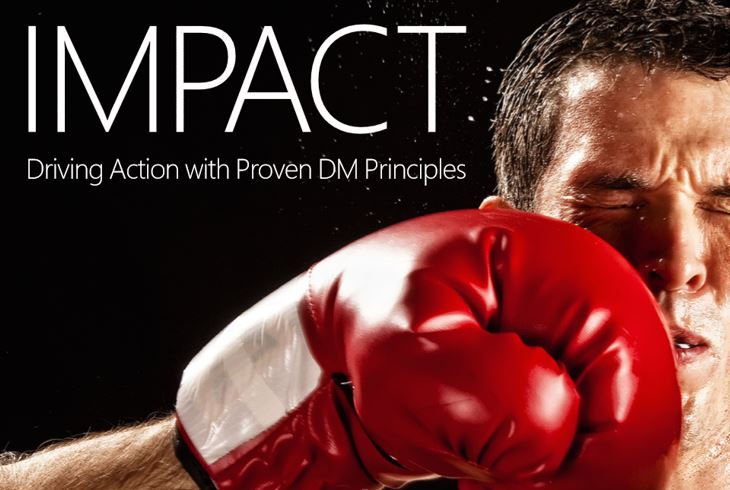Creating Advertising that Sells: 10 Steps to Becoming a Great Client
“Any fool can write a bad advertisement, but it takes a genius to keep his hands off a good one.”
– David Ogilvy
One of the great un-taught and un-appreciated skills in business is the skill of being a good client. Too many people look at the agency as a group of terrified individuals they can boss around and threaten, as opposed to a business partner. The process of constantly firing agencies and forcing them to fight over RFPs is not conducive to a long-term relationship — imagine if you made your spouse re-interview for their role every year?
The irony of agency change is of course the same group of people move from one holding company to the next — so after all the change management and disruption, you’re basically working with the same folks all over again — and at the end of the day it’s the people that count.
When I started at P&G they had been working with some of their agencies for more than 50 years — it created a very even-handed partnership. I remember getting dressed down more than once from different agency personnel for the various stupid things I used to say back then (and I deserved it). The best thing is that they felt comfortable doing it, and I learned a ton from all that feedback. I wouldn’t be the advertising person I am today if those agency folks hadn’t cared enough to tell me that I was an idiot.
The role which the client owns is the role of strategy. The client knows the product best, and should be the voice of Benefit, Reason Why, and Brand Character. Done well, the remaining work by the client should be to assess the agency’s efforts to deliver communication of that strategy (more on how to assess those efforts in another post). Too many clients abrogate this responsibility since it is a form of commitment, and prefer to let the agency thrash on creative executions against a foggy business need, on the premise that “I’ll know it when I see it”. No you won’t.
The 10 steps below do a nice job of summarizing client responsibilities, and are drawn from a variety of sources. The primary source is “How to Advertise” by Ken Roman and Jane Maas, which is a classic of the client-coaching genre: Link
The bonus step is drawn from my own experiences.
STEP 1
Focus on creating and finding unique advantage in your product. What’s the *1 thing* that makes your product really different, really special? If you only had 3 seconds to make a pitch in order to eat tonight, what aspect of your product would you pitch in order to generate a sale?
STEP 2
Stay Big Picture in creative presentations from the Agency. Comment on the 1 or 2 things your customer will recall from the ad, such as Selling line; Key visual; and Dramatic flow.
STEP 3
Be honest with your Agency. Act like a real person, with real emotions. If you like something, say it. If you hate something, say it. If you’re not sure, it’s OK to say that too.
STEP 4
Approve or kill an idea in the third meeting. Over meeting and nitpicking is the best way to ruin your advertising and demotivate your Agency.
STEP 5
Take risks. Nothing motivates like responsibility. Taking an Agency recommendation *unchanged* is an incredible motivator for the Agency – don’t worry, they’ll keep refining it without your “builds”. Some of the world’s best campaigns were gambles taken by gutsy clients.
STEP 6
Demand excellence. Benchmark against the best, and insist on the same for your business. Nothing motivates like a challenge (except responsibility).
STEP 7
Set clear objectives. Your Agency can’t read your mind. If you’ve got an idea, tell them. It drives people crazy if they feel you are trying to manipulate them into a point-of-view.
STEP 8
Let the agency make money. Nobody goes into advertising for the cash, and the business itself is fairly low margin (and high risk). Therefore, squeezing really hurts. You really want your Agency worrying about your business, not theirs. Create an atmosphere of permanence, solidity, and security with your Agency. If you continuously swing an axe over your Agency’s head, they’ll spend their time pitching for their next client, instead of spending the time on pitching new ideas to you.
STEP 9
Stay current. Don’t hide away in your McMansion and let yourself get out-of-touch with the world inhabited by your customers. Take some risks and lean out on the edge a bit – read Boing Boing, go to a Maker Faire, attend Burning Man, get a 3D printer. Stay young!
STEP 10
Have fun. Enjoy the advertising, and be enthusiastic with the work. This is a really fun way to make money, and trust me – there are a lot worse things you can do for a living. Make yourself the kind of client with whom people want to work.
BONUS STEP
Don’t be an ass. Assume that everything you write and say will be published on the front page of the New York Times. Most importantly, do unto others as you would have them do unto you. And remember, you are a representative of your company’s brand, so treat people with dignity and respect, always.

